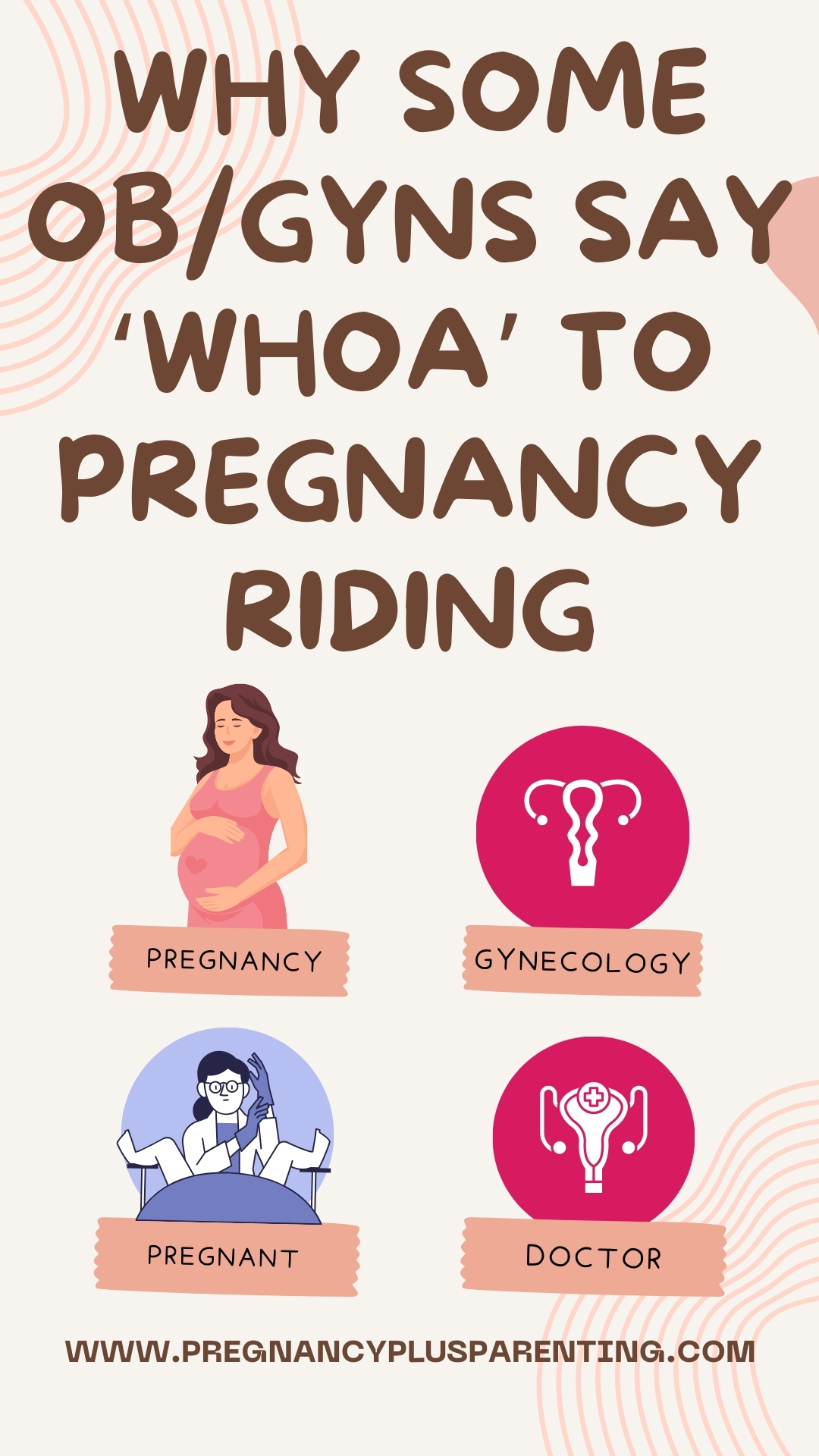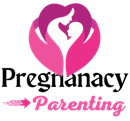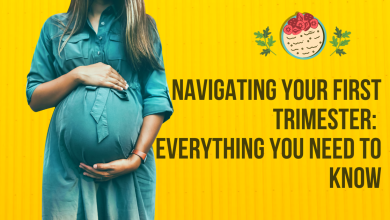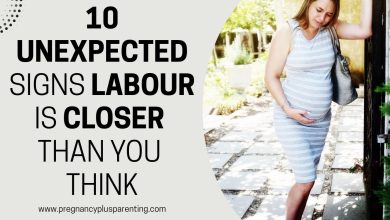Why Some OB/GYNs Say ‘Whoa’ to Pregnancy Riding
Riding during pregnancy is certainly a hotly debated topic.
This topic is sure to concern every expectant mother who loves riding.
Horse riding is indeed a risky sport for expectant mothers who want to continue riding during their pregnancy.
There has been a debate about the topic of “riding during pregnancy” that has been going on for years.
Many riders ask themselves whether they should continue riding during pregnancy or not.
Although many doctors advise against riding during pregnancy because of the risk of miscarriage and premature birth, there are no solid research reports to support this.
Many studies even advise pregnant women to continue their exercise and sports program during pregnancy.
In their opinion, pregnancy is a normal time in which mother and child develop together.
Activities during pregnancy are even said to promote pregnancy.
Well, the question of whether horse riding is also a sport that is recommended during pregnancy remains open.
Exercise plays an important role in the well-being of the mother and the unborn child, it regulates weight gain and positively influences the recovery after birth.
On the other hand, horse riding is a risky sport where the risk of accidents is very high.
It is also said that female riders have tight pelvic floor muscles, which make childbirth more difficult, but tight pelvic floor or not, no rider or gynecologist has yet linked this to riding.
Horse riding is not the only risky sport during pregnancy; it also includes ice skating, team sports, ball sports, skiing and diving.
All of these sports could cause serious injuries that could have a negative impact on both the expectant mother and the unborn baby and could cause various discomforts during pregnancy .
Exercise during pregnancy
Expectant mothers experience a rollercoaster of emotions, ranging from happiness to stress, when it comes to the well-being of their unborn baby.
Such mothers will do everything they can to ensure that they do not endanger their pregnancy or their unborn baby.
It is therefore not surprising that an expectant mother thinks a lot about what she should eat during pregnancy (if you have a craving for crustaceans or small tubers, you can get advice here) or what medication she can take in case of a cold and also how much exercise and which types of exercise are good for her and the baby.
This brings us to the question: Is exercise allowed during pregnancy?
Undoubtedly, the most important thing is that you always consult with your gynecologist beforehand about which sport is right for you during pregnancy. Regardless of whether you have any health restrictions and whether your pregnancy is classified as high-risk, you will also receive the right recommendation.
There may be health and physical factors that limit your ability to exercise during pregnancy and after birth.
Regardless, the majority of pregnant women can exercise and remain active during early pregnancy. Healthy pregnant women are even recommended to engage in 30 minutes of daily activity.
Sports such as hiking, swimming, cycling and aerobics are particularly recommended for beginners, although running, weight training and other strenuous sports are recommended to a limited extent.
Expectant mothers who have engaged in a risky sport before pregnancy may continue to do so during pregnancy provided that they feel well and that they do not expose themselves to a high risk of accidents.
Before you decide to do a sport during pregnancy, you should always consult your gynecologist beforehand, because many sports can cause complications and, instead of improving your well-being during pregnancy, can endanger your pregnancy, your health and the health of your unborn baby.
Physical and emotional benefits of exercise during pregnancy
There are many benefits to exercising during pregnancy, including physical and emotional ones.
More energy, relief from back pain, improved circulatory system, relief from cramps, less swollen hands or feet, incontinence and controlled weight gain are also benefits that a pregnant woman can thank exercise for.
The rule is, if you feel comfortable with it and if you don’t expose yourself to any additional danger while exercising, then it is absolutely allowed.
As you probably already know, hormones regulate many processes in your body and exercise has a positive effect on your hormone balance.
Your hormonal balance affects your body structure, your digestion, your skin, your sleep, the way you deal with stressful situations, mood swings and your libido, and during pregnancy your hormones go crazy.
Sport is a clever way to restore hormonal balance.
While you exercise, happiness hormones, among many other hormones, are released, which can have a very positive effect on your pregnancy and your overall well-being, which in turn also has a positive effect on the unborn baby.
Exercising in the first trimester
The first trimester is a time when a woman’s body changes immensely.
During early pregnancy, the embryo develops at a rapid pace.
This is also the reason why pregnant women suffer from fatigue and discomfort such as morning sickness in the first trimester .
In early pregnancy, the body works at full speed and learns to adapt to the new situation, namely pregnancy.
Many expectant mothers don’t even think about exercising during this time, but once they’ve overcome their fear, a little exercise can do them a lot of good.
When it comes to exercise during pregnancy, the rule is: “nothing new”.
This means that if you haven’t done it before, you shouldn’t do it, even while pregnant. You should avoid sports like ball sports, sports with a risk of falling, sports at high altitudes, and generally high-risk sports where there’s a high risk of accidents.
However, if you were involved in a particular sport before pregnancy, you can continue doing it after consulting your gynecologist, adapted to the first trimester.
Just 30 minutes of exercise a day will have a positive effect on your pregnancy.
You should be careful when doing abdominal exercises, as incorrect movements can cause recti diastasis during pregnancy and cause pelvic floor problems.
In general, you should be careful not to do any exercises that make no sense during pregnancy, such as sit-ups or crunches, which deliberately shorten the abdominal muscles, although they must and will expand during pregnancy anyway.
If you don’t want to miss out on exercise during pregnancy, then you should choose not only functional but also adapted training during pregnancy.
Since the mother’s blood vessels expand during pregnancy, especially in early pregnancy, you should avoid exercises that involve lying on your back for long periods of time, as these could inhibit blood flow to the heart and cause dizziness when standing up.
Exercising in the second trimester
The second trimester is also called the “feel-good trimester” because the expectant mother and her body have now adjusted hormonally to the pregnancy.
However, this does not mean that the expectant mother’s body will not continue to change during the course of the pregnancy.
Now the belly is slowly becoming visible and the weight gain is starting to set in.
Lack of motivation and loss of energy may also occur and you will probably need new clothes as your belly grows and that cute baby bump slowly becomes visible.
The second trimester is also usually the time when the pregnancy is announced, because the baby bump can no longer be camouflaged so easily.
The symptoms of these changes in your body affect your posture, center of gravity, balance and coordination.
At this point, sports that are energetic and require flexibility become more strenuous and difficult for the expectant mother.
The training must now be slowly adapted to your pregnancy in order to prevent possible injuries.
You should avoid activities and workouts that are physically strenuous and put your stomach at risk.
In the second trimester, aqua aerobics is recommended because it is considered safe.
Exercising in the third trimester
Now you’re almost there and even putting on your shoes is becoming more difficult for you.
But if you still feel fit enough, nothing stands in the way of you and your love of sport.
However, when you discuss it with your gynecologist, you will probably be advised to slow down.
You should also avoid exercising lying on your back, as your uterus can now prevent your blood from flowing back to your heart, which in turn can lead to circulatory problems.
You are left with exercises while standing, sitting and lying on your side.
Now it’s time to improvise!
You should also avoid dynamic and static exercises and choose a sport that controls the full range of motion and doesn’t leave you out of breath.
From this point on, a competitive sports program is also taboo for you, and risky sports even more so.
Exercise during pregnancy – done right
Prenatal exercises require all sorts of adaptations because the woman’s body is changing and the additional weight affects posture, balance, energy and stamina and also puts more pressure on the joints, ligaments and muscles and the weight gain also affects the circulatory system.
Expectant mothers must pay attention to their fluid intake when exercising and avoid exercising in hot and humid environments.
The body of expectant mothers who were actively involved in sports before pregnancy will be able to adapt to the challenges more easily than the body of a woman who was not involved in sports before pregnancy.
That’s why it’s recommended not to start a new sport or activity during pregnancy, but to stick to your current pace, because pregnancy is definitely not a good time to start a new or even risky sport.
Now that exercise is generally healthy and has a positive effect on you and your unborn baby during pregnancy, you should definitely stay active and exercise regularly.
Even top athletes slow down a bit during pregnancy, so less fit mothers should generally start with walking or hiking, where the whole body stays active and you don’t get out of breath as easily.
It is important that you do not wear tight clothes for training or walking, but rather loose clothing made of airy materials that absorb sweat and do not restrict your movements while training.
Leggings and tops in the maternity wear department (find out when maternity wear makes sense here) are ideal for this, as they are also designed for this purpose.
Why exercise is good during pregnancy
Current studies show that exercise is an important part of pregnancy for expectant mothers.
According to studies, women who exercise regularly and are active also have a complication-free pregnancy and delivery, which even lasts shorter than in inactive women.
The risk of miscarriage or premature birth is also lower in athletic women and cesarean sections are also rare.
Excessive weight gain is also lower in athletic women and the risk of pregnancy-related high blood pressure, back pain or incontinence is also reduced.
Since many hormones are released during exercise, which definitely influence well-being, exercise during pregnancy also has a positive effect on perinatal depression.
With so many positive aspects of exercise during pregnancy, the question remains: what should be taken into account in order not to endanger the mother and the baby?
When exercise is dangerous during pregnancy
In an intact pregnancy the risks are also lower, but caution is advised in high-risk pregnancies.
Women who are at risk of developing complications should always consult their gynecologist to significantly reduce their exercise.
Risk factors are:
• Heart disease
• Infectious diseases
• previous miscarriages
• Bleeding in early pregnancy
• Multiple births
• premature labor
You should stop training immediately and contact your gynecologist if any of these symptoms occur:
• premature labor
• Dizziness
• Breathing problems
• Abdominal pain
• Bleeding
Now to the topic of riding during pregnancy
In Germany, 5,000 to 10,000 female riders become pregnant every year, including riders who only ride as a recreational sport as well as professional riders.
How long and whether a rider should stay in the saddle is an open topic that has so far been subject to little research.
Although many riders report having ridden their horse almost to term, this should be treated with caution, as what applies to one pregnant woman may not apply to everyone.
Every woman and every pregnancy is unique and a complicated pregnancy is different from a planned pregnancy.
It is important that you discuss with your gynecologist whether riding during pregnancy is still an option for you or not before exposing yourself and your unborn baby to this risk.
But don’t expect a blanket answer like YES or NO, because many factors play a role and ultimately it’s up to you how big a risk you want to take.
The risk depends primarily on your riding skills and your horse.
If you are still a beginner, you may want to consider whether continuing to ride is good for you or not.
Riding involves coordination, agility, strength, endurance and speed, which makes riding a high-performance sport and a high-risk sport.
Since your physical abilities are now limited during pregnancy, the risk of accidents increases, especially if you are a beginner or your horse is still unsure or young.
Whether you like it or not, horse riding is a high-risk sport that can endanger you and your unborn baby.
Even the best riders and the most well-behaved horses are not perfect and can stumble or fall.
There are riders who ride almost until their due date, there are those who gave up riding immediately when they became pregnant, and there are also those who had to give up riding because of health problems.
Apart from the high risk of accidents, which is a high risk during pregnancy and why riding is classified as high-risk, there is actually nothing that speaks against riding during pregnancy.
As long as a pregnant woman feels comfortable with riding and the unborn baby is doing well, there is actually nothing wrong with it.
Susanna Kramarz published her dissertation entitled “Riding in Pregnancy” in 2011, which focused on various aspects of pregnancy, including the risk of miscarriage and premature birth, for her work on riding.
Susanna Kramarz concluded that neither dressage nor show jumping had a negative influence on the duration of pregnancy or the abortion rate.
Factors causing miscarriage or premature birth depended on other maternal conditions.
For a rider with an intact pregnancy, riding has no negative impact on the risk of premature birth, the delivery, or the course of the pregnancy.
According to Susanna Kramarz’s investigations, no increase in the risk of miscarriage due to equestrian sports in the first months of pregnancy could be detected.
Recent research shows that strenuous activities can actually affect pregnancy
During pregnancy, ligaments and tendons lose their strength and stability because they become softer.
During pregnancy, women’s sense of balance weakens and their center of gravity shifts, coordination and body mechanics are also affected and, in addition, many women also gain weight.
All of this affects their abilities, limiting safe riding, which in turn greatly increases the risk of accidents, premature births, and bone fractures.
Continuing to ride during pregnancy is your own private and difficult decision, which only you and your gynecologist can make.
Some gynecologists support riding during pregnancy on the condition that the expectant mother has ridden regularly before pregnancy, while other gynecologists recommend never riding during pregnancy and stopping immediately.
However, most of the advice given by gynecologists only applies up to the 12th week of pregnancy (SSW) and then it stops.
The reason why horse riding is allowed in early pregnancy but not recommended after the 12th week of pregnancy is because after the 12th week of pregnancy the fetus has positioned itself in the pelvic girdle.
Until the 12th week of pregnancy, the fetus is protected by the bone structure of the pelvis and after that, only muscles and skin protect it and a fall from horseback or other riding accident at this time could be fatal for the unborn child.
If you do not want to give up riding during pregnancy under any circumstances, then be sure to choose a calm horse to ride.
Even if you have known a horse since it was small, there is always the possibility of being kicked by it. You can never predict a horse’s behavior, so you should always be careful.
If your pregnancy has been classified as high risk, or you have a family history of preterm labor, or have previously suffered pregnancy loss before 24 weeks, you may want to cut back or avoid riding and focus on ground work or not work around horses at all during pregnancy.
When riding, pushing and shoving can lead to placental abruption, where the placenta separates from the uterine wall, which could be fatal for you and your unborn child.
Due to the balance problems that occur during pregnancy, even riding is uncomfortable and the up and down movements while riding can even cause nausea.
According to this information, all gynecologists seem to agree that horse riding during pregnancy is dangerous and recommend stopping it altogether after the 12th week of pregnancy.
But the decision whether you want to stop or continue riding is entirely up to you, because it is ultimately a private and personal decision that you should make together with your gynecologist.
With some adjustments and following the guidelines, it may be possible to train safely during pregnancy, so that you stay fit and can return to your previous level and get back in the saddle more quickly after the pregnancy.
Adapting riding to pregnancy
As soon as you feel the first movements of your baby, you should avoid riding out alone, because the bigger the baby bump gets, the more strenuous it will be to continue riding.
Not only will your breeches start to pinch, but your blood volume will also increase during pregnancy and your body will be working at full speed, which can easily leave you out of breath.
Therefore, it may be more sensible to ride on familiar terrain and, above all, to avoid riding on unfamiliar terrain, as riding without an escort could be a big mistake at this moment.
Also cut down on the number of rides and focus more on ground work.
The baby bump gets bigger as the pregnancy progresses, which makes it more difficult to dismount the horse and even more difficult to get on.
To mount, you can use a mounting aid, which is also much gentler on the horse’s back.
Dismounting, however, is a bit more complicated and a mounting aid won’t help you with that either, as you’ll have to swing your leg over the horse’s neck, where the baby bump will be in the way, and find a way to land safely on the ground without falling or injuring yourself.
This is why most gynecologists advise against riding, because not only does sitting for long periods of time become more strenuous and uncomfortable, but also getting on and off the horse increases the risk of accidents.
During your pregnancy there will definitely be days when you will feel totally fit and will be able to trot and tölt.
However, tölt is not recommended because for that you need your abdominal muscles, which have now shifted to the side, and your center of gravity has also shifted.
The most important thing is that you don’t stress yourself out, but simply follow your gut feeling and do what makes you happy in that moment.
Of course, keep in mind that you are not alone and that you are responsible for another life that is at the mercy of your decisions.
Stable work during pregnancy
In addition to riding, pregnant women are also likely to be busy with stable work during pregnancy.
Because the stable work has to be done despite pregnancy and since working during pregnancy is strenuous, you will definitely have to rely on teamwork as your pregnancy progresses.
At first, assuming you don’t suffer from nausea or other discomforts, you will be able to do the stable work on your own, but later on, carrying a hay bag that weighs on average 17 kg, pushing a wheelbarrow and mucking out will certainly not be an easy task for you.
Not only carrying, but also everything else related to stable work is real hard work, which will become increasingly difficult for you as your pregnancy progresses and could cause severe back pain.
You will need help and depend on the help of others.
It might be wise to look for a riding share in good time, where you share the care of the horse with a riding partner.
This way you can rest assured that your horse will not miss out on less good days and that it will be well looked after, even when you are away.
Final thoughts
Dear expectant mother, I hope you are not too sad and disappointed by these findings.
Even if I wanted to, I unfortunately can’t give you a general answer and there is unfortunately no right or wrong when it comes to riding during pregnancy.
Just do what makes you happy, because even if there are many things that speak against it, sport is healthy, fresh air that you get while riding strengthens your immune system and it has also been proven that people who have pets and are often in contact with animals also live much healthier lives.
You don’t have to answer to anyone either, because as with everything, there will be “well-intentioned” advice and know-it-alls who can’t combine riding and pregnancy and who will make you feel the need to justify your decisions and actions.
But you don’t have to, because ultimately it’s your body and your child.
As an expectant mother, you will be able to sense whether your baby is doing well and whether something is good for you or not, and as an experienced rider, you will also be able to assess whether riding in early pregnancy and beyond poses a risk to you and your unborn baby or not.
Besides, happy pregnant women have happy babies and that is the whole point.
Because if depriving yourself of your favorite activity has a strong negative impact on you and your emotions, then it doesn’t make sense.
The worst thing is to become paranoid and grieve unhappily at home, because that doesn’t bring any good either, because even though you are pregnant, you are not sick and if you are prepared to take on the responsibility, then there is nothing wrong with riding during pregnancy.
I hope you stay cautious and make the right decision and ride towards your appointment happy and satisfied.
Have fun and take care!







